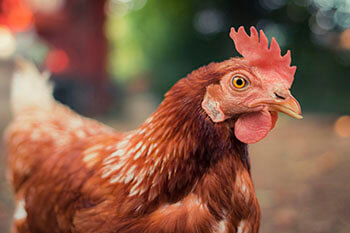The Nitty Gritty on Hen Digestion
Aug 12, 2019

It is important to understand your hen’s digestive system when making proper nutrition choices. Poultry rely on the gizzard to break feeds down for digestion.
When a chicken consumes feed, the feed enters the mouth and mixes with saliva. As it is swallowed, it travels down the esophagus to the crop. The crop serves as a storage compartment.
From the crop, the feed moves into the proventriculus. Digestive enzymes and acid are secreted and begin to digest the feed. Unfortunately, the acidic environment of the proventriculus is not enough to fully digest large particles of feed like grains, or fibrous materials like grass.
As a result, the undigested material moves into the gizzard. The walls of the gizzard are very touch and muscular. These muscles, with the help of small rocks, or grit, mix and grind the undigested feed into smaller particles that can be digested. Free-range birds will often pick up small stones from the ground, however, poultry who don’t have a regular way to obtain grit should be offered it to aid in the digestion process.
Grit comes in small, medium, and large sizes for starting, growing, and finishing poultry, respectively. Young chicks should be started on grit by sprinkling it on their feed twice a week. Growing chickens and hens should be provided grit free-choice in a feed pan or trough. While it is no necessary to supplement grit to birds consuming a mash, crumble, or pelleted feed, it does no harm.
As compared to grit, limestone is offered to poultry as a source of calcium. While it can provide some grinding action, it dissolves and is absorbed before the undigested feed is completely ground. Laying hens have increased calcium requirements due to egg production. Oyster shells are also a good source of supplemental calcium and can be offered free-choice to laying hens.
The Co-op offers all three supplements: grit, limestone, and oyster shells, in addition to a full line of complete poultry feeds and scratch grains. For help assessing your bird’s diet, visit with the feed representative at your local Co-op.